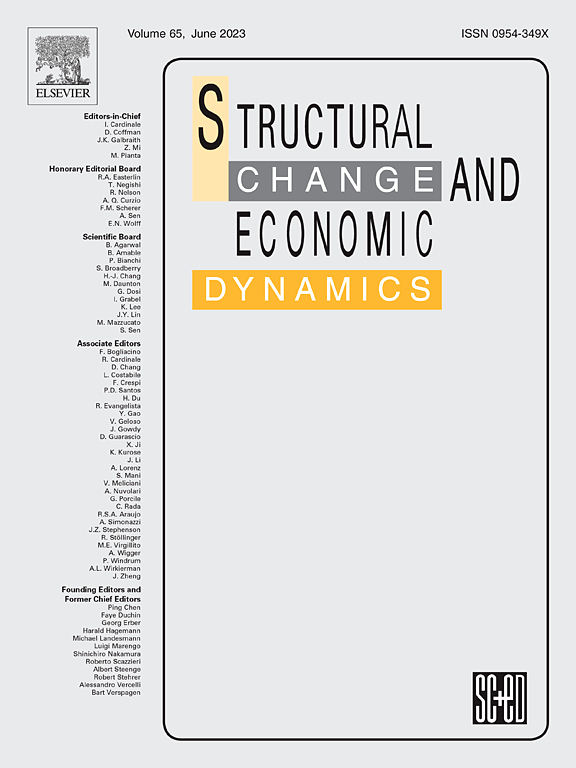从能源消费控制到碳排放控制:内蒙古的一般均衡分析
IF 5.5
2区 经济学
Q1 ECONOMICS
引用次数: 0
摘要
中国提出从控制能源消耗转向控制碳排放。然而,它对化石和可再生能源丰富地区(FRERs)的影响很少受到关注。本研究采用可计算一般均衡(CGE)模型来评估这种过渡政策在内蒙古的影响-一个典型的frr。为实施全国性的碳排放交易系统(ETS)和目标控制能源消耗和碳排放政策,建立了几种方案。结果表明,通过ETS推动低碳转型将有助于内蒙古在2030年前实现碳排放峰值,并促进GDP增长,2030年GDP增幅最高可达0.19%。目标控制政策会扭曲减排负担的最优配置,导致经济损失,在碳排放控制背景下经济损失更为明显。这些发现为政策制定者协调国家和地方碳减排政策和促进低碳转型提供了重要见解。本文章由计算机程序翻译,如有差异,请以英文原文为准。
From energy consumption control to carbon emission control in fossil and renewable energy rich regions: A general equilibrium analysis of Inner Mongolia
China has proposed to shift from energy consumption control to carbon emission control. However, little attention has been paid to its impact on Fossil and Renewable Energy-rich Regions (FRERs). This study employs a Computable General Equilibrium (CGE) model to evaluate the impacts of such a transition policy in Inner Mongolia – a typical FRER. Several scenarios are established to implement a nationwide Emissions Trading System (ETS) and target control policies on energy consumption and carbon emissions. The results show that promoting low carbon transition through ETS would help Inner Mongolia peak its carbon emission before 2030 and promote GDP, with a maximum 0.19 % rise in 2030. The target control policies would distort the optimal allocation of abatement burdens, leading to economic losses which would be more obvious under the context of carbon emissions control. These findings offer critical insights for policymakers to coordinate national and subnational carbon abatement policies and promote low carbon transition.
求助全文
通过发布文献求助,成功后即可免费获取论文全文。
去求助
来源期刊

Structural Change and Economic Dynamics
ECONOMICS-
CiteScore
9.60
自引率
4.90%
发文量
159
期刊介绍:
Structural Change and Economic Dynamics publishes articles about theoretical, applied and methodological aspects of structural change in economic systems. The journal publishes work analysing dynamics and structural breaks in economic, technological, behavioural and institutional patterns.
 求助内容:
求助内容: 应助结果提醒方式:
应助结果提醒方式:


